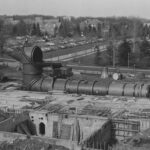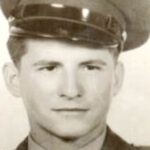Andrew Gregg
Andrew Gregg was an early landowner in Penns Valley who became an important politician, representing the middle portion of the state in the U.S. House of Representatives and Pennsylvania as a United States senator.

Andrew Gregg was an early landowner in Penns Valley who became an important politician, representing the middle portion of the state in the U.S. House of Representatives and Pennsylvania as a United States senator.
At least twenty-eight Black men from Centre County served in the U.S. Colored Troops during the Civil War. Their experiences provide insight into the recruitment of the North’s Free Blacks into the army during the war.
Peter Gray Meek was the controversial editor of the Democratic Watchman for more than fifty years. He was widely known for his editorials opposing the Civil War, which led to his arrest several times.

John Patton was a Revolutionary War veteran and prosperous Philadelphia merchant and civic leader, who moved to Centre County in 1789 to build the region’s first charcoal-fired iron furnace, Centre Furnace. The operation’s success sparked the founding of additional furnaces and forges in what would become Centre County.
The Boal Mansion is the ancestral home of one of Centre County’s most distinguished families. Since 1952, it has been operated as a museum.

The Garfield Thomas Water Tunnel is a historic engineering landmark on the Penn State campus that, for more than 70 years, has been used for research into military technology and other subjects. Built in 1949 it named in honor of Lt. j.g. Garfield Thomas, who died in fighting during World War II.

Foster Joseph Sayers was a Centre County native who was awarded the Medal of Honor for gallantry during World War II. His remarkable bravery allowed his fellow soldiers to attain their objective in reaching the crest of the hill while killing or capturing the German soldiers on it. Sayers, who was 20 years old, died in the fighting.
General James Potter was a Pennsylvania military and political leader and frontier land developer, who is best known in Centre County for the exploratory trek that led him to the crest of Mount Nittany, overlooking Penns Valley, and his declaration that he had discovered an empire.

Militias played a central role in antebellum Centre County, teaching men military discipline and arms skills to ensure their readiness for war. The volunteer companies also served as fraternal organizations that linked members to the communities.

The Soldiers and Sailors Memorial and Andrew G. Curtin statue in Bellefonte honor Centre County veterans and Pennsylvania’s Civil War governor. Dedicated on June 8, 1906, the memorial and statue stand in front of the county courthouse on the Diamond in the center of town.